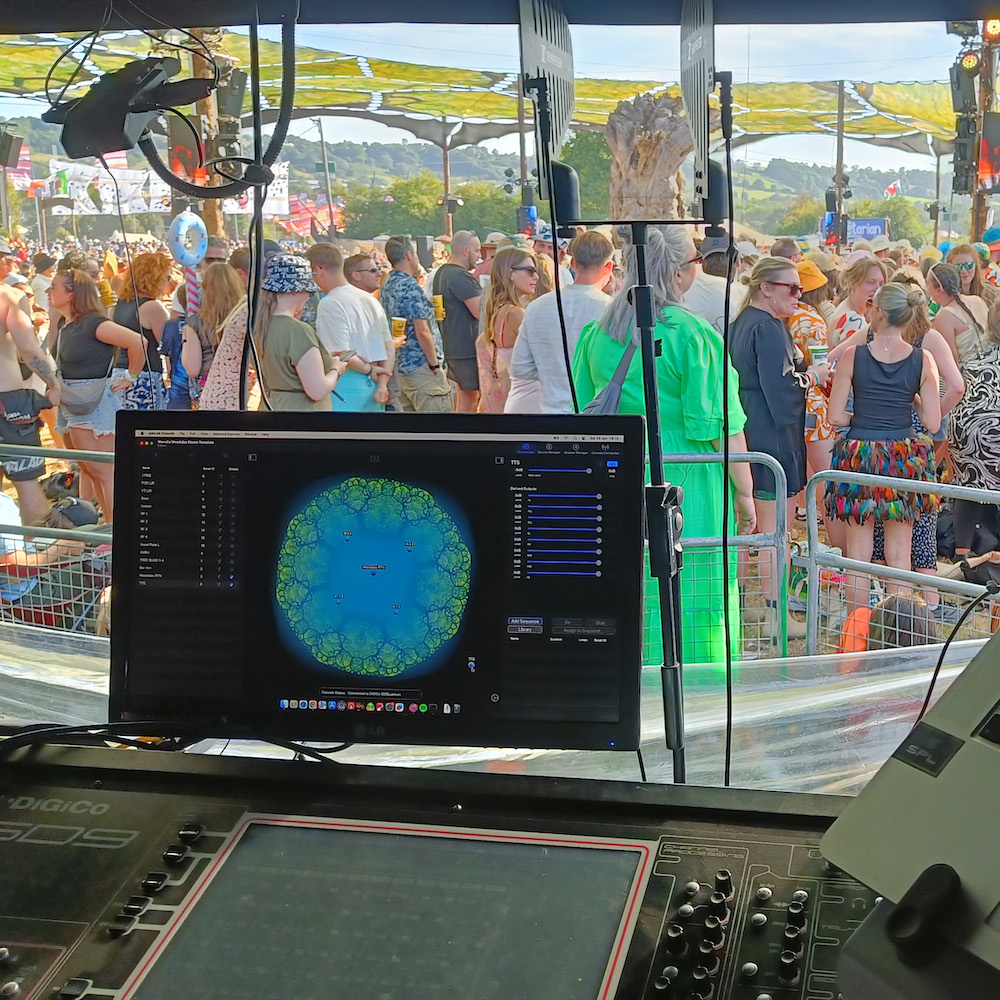
UK / Middle East – Set for launch at the PLASA Show (London, 3-5 September), panLab Console is a brand-new tool from Innovate Audio providing a spatial audio solution that can be set up in under five minutes.
The system is currently undergoing Beta testing at the fingertips of sound designer Luke Swaffield of Autograph Sound – a long-standing panLab user. Already, it is making a difference to a complex theatrical production – an immersive visitor experience with multiple zones of theatrical activity – Peaky Blinders: The Rise. Having recently enjoyed a successful run in London, the show has now been reproduced as part of the Gamers8 2023 festival in the Middle East, produced by Immersive Everywhere, with local partner Tarteeb.
panLab Console promises to bring sound spatialization capabilities to a whole new audience – directly through the mixing console. The new software will turn almost any digital audio console into a spatial audio renderer, enabling designers to deploy amplitude-based panning using their existing hardware.
Of using the new panLab Console integration, Swaffield says, “It was really easy to access – I was up and running in minutes. I just entered the IP address of the console I wanted to connect and voila – we were in!”
Swaffield has been involved with panLab since its very beginning, and worked closely with the system’s creator, Daniel Higgott, for even longer, so he was the ideal designer to put the new tool through its paces during Beta testing. After trying out panLab 3 on Secret Cinema’s Guardians of the Galaxy and subsequently deploying it on The Curious Case of Benjamin Button The Musical, he says, “I haven’t looked back . . . It’s a staple in my audio toolkit on every show I do.”
For this latest production, Swaffield is using panLab Console in conjunction with Yamaha QL1 mixing consoles, supplied by MediaPro. He explains, “We have two instances of panLab Console running on two different MacBook Pros. Both are running QLab v5 software and send OSC to panLab to control the positioning of the microphones. Both connect to different QL1 consoles and operate separately across the two different spaces.”
Due to differences in the scenic environment of the new location (“scenic flats are just not as sound-proofed as brick walls!” says Swaffield), the new production calls for increased localization of sounds and microphones. “panLab Console made this very simple,” says Swaffield, “as we could draw in exactly where we wanted the sound of the microphone to come from. It also allowed us to dynamically change that position, so if we wanted to grow a scene out into the larger space, for example, we could do so dynamically and smoothly via a simple OSC cue.”
He adds, “Without access to panLab, we’d have had to use multiple MIDI controller messages to control each mix send, or have a scene change, which would need a lot of careful programming of the Recall Safes, so as not to affect the other inputs we use.”
Swaffield sees particular value for site-specific productions like this one, where action occurs across multiple spaces. “This type of production calls for us to automate the mic levels quite tightly, as we can’t have an operator everywhere, all the time. Previously, I did this using MIDI controller messages, but to fade these on QLab (‘fade from value X to value Y’) I’d have to know the starting level. Using OSC to panLab removes this extra step as I can say ‘go to level X over Y seconds’ – and panLab knows the mic start level at that point in the show.”
Even one of the biggest steps forward for the new software – the graphical presentation of its new three-dimensional working environment, with the algorithm upgraded to include the height axis – was a relatively straightforward adjustment. “Being familiar with panLab 3’s interface, I found the 3D interface quite intuitive,” says Swaffield.
He continues, “Dan has, as always, been very helpful to us, providing support and advice. We’ve had a constant dialogue about the software, and he’s been very open to our suggestions, as to how we could implement new features and changes to make the software work best when being deployed on a production.”
All in all, Swaffield views panLab Console as “an exciting development” for sound engineers. “It opens up this visual control of sound positioning to a much wider group of users at a very affordable price point,” he says. “Even just using the software to bypass those thought processes, to allow me to concentrate more on the creative sound design, is a very exciting development.”
Innovate Audio’s Daniel Higgott says, “Luke’s experience and understanding of panLab has been invaluable in helping us to get panLab Console to the point where it really offers a valuable, time-saving tool to sound designers everywhere. We are very happy with the difference we’ve been able to make and we’re really looking forward to being bringing these benefits to more users than ever before.”
Innovate Audio will be ready to demonstrate and discuss the opportunities offered by panLab Console at the PLASA Show on stand A23.


